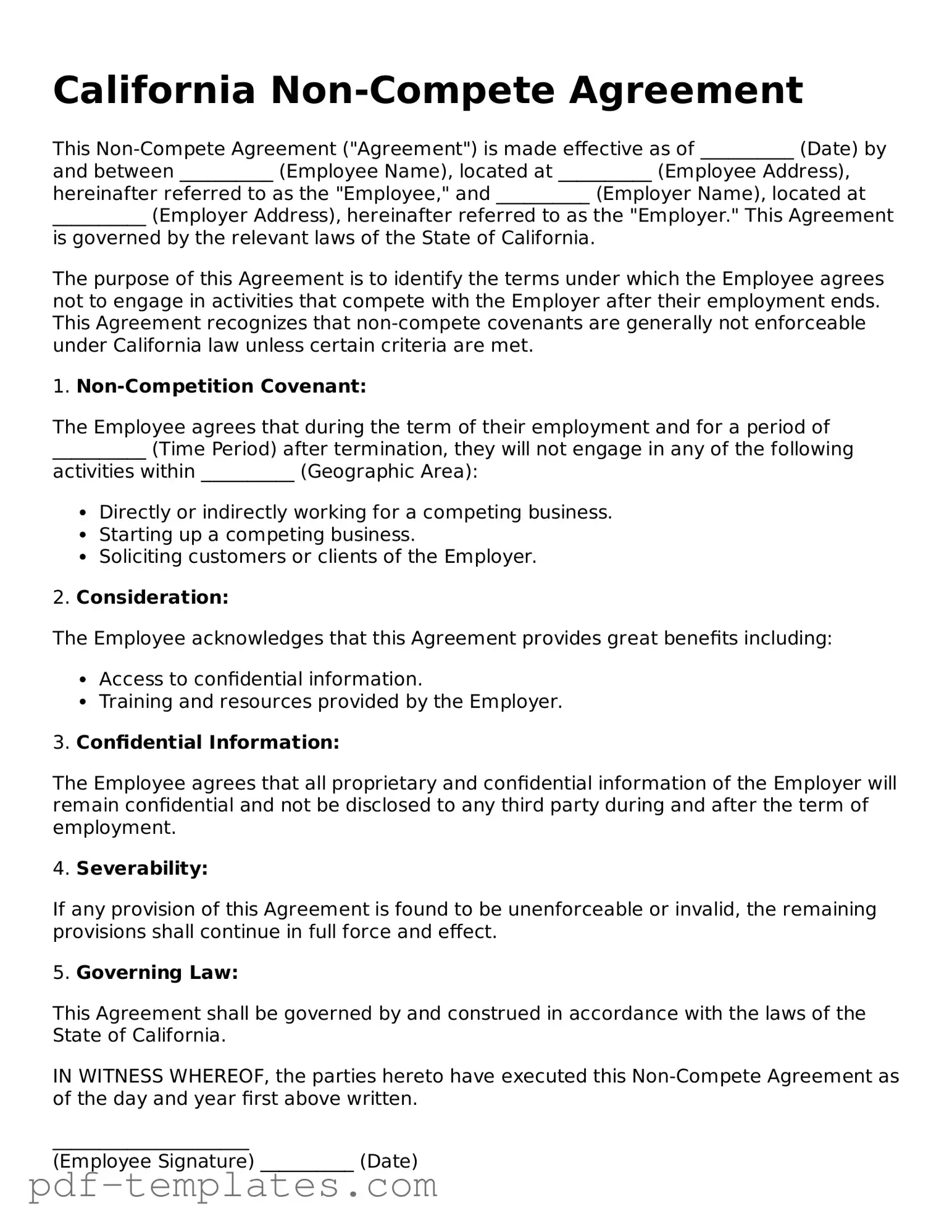The California Non-compete Agreement form shares similarities with a Confidentiality Agreement, often called a Non-Disclosure Agreement (NDA). Both documents aim to protect sensitive information. While a Non-compete Agreement restricts an employee from working with competitors after leaving a job, a Confidentiality Agreement focuses on preventing the sharing of proprietary information during and after employment. Both agreements emphasize the importance of safeguarding a company's intellectual property and trade secrets, but they do so through different means.
Another document that resembles the California Non-compete Agreement is the Non-Solicitation Agreement. This agreement prevents an employee from soliciting clients or employees from their former employer after leaving the company. Like the Non-compete Agreement, it seeks to protect the business interests of the employer. However, the Non-solicitation Agreement is generally less restrictive, allowing the former employee to work in the industry as long as they do not actively pursue the employer’s clients or staff.
The Employment Agreement also shares characteristics with the Non-compete Agreement. An Employment Agreement outlines the terms of employment, including responsibilities, compensation, and duration of employment. Often, it includes clauses about non-compete and non-solicitation terms. While the Employment Agreement covers a broader scope of employment conditions, it may incorporate elements similar to those found in a Non-compete Agreement to protect the employer's interests.
The CA DMV SR1 form is a mandatory report for traffic accidents occurring in California, as required by the state's Department of Motor Vehicles (DMV). It serves to document the specifics of an accident involving personal injury, death, or property damage exceeding $1,000. Completing and submitting this form within the stipulated timeline is crucial to avoid potential suspension of driving privileges. For further information, visit https://formcalifornia.com.
Lastly, the Severance Agreement can be likened to the California Non-compete Agreement. A Severance Agreement typically outlines the terms under which an employee receives severance pay after leaving a job. In some cases, it may include non-compete clauses as part of the terms for receiving the severance benefits. Both documents serve to clarify the expectations and obligations of the parties involved after the employment relationship ends, although the focus of the Severance Agreement is primarily on compensation rather than competitive restrictions.
